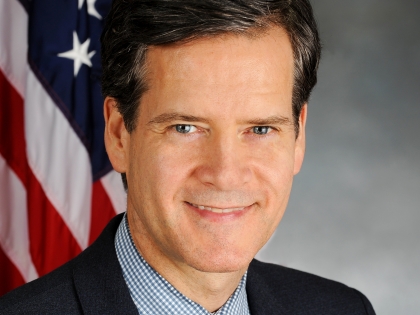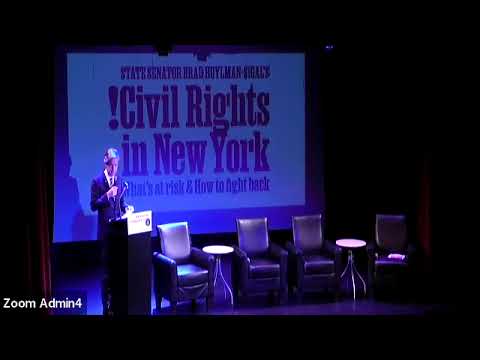
Testimony of State Senator Brad Hoylman-Sigal and State Senator Liz Krueger to the New York State Office of Temporary and Disability Assistance Regarding the New York State Plan for the 2024-2025 Home Energy Assistance Program (HEAP)
Senator Brad Hoylman-Sigal and Senator Liz Krueger
May 2, 2024

Thank you for this opportunity to submit comments on the development of the 2024-2025 New York State Home Energy Assistance Program State Plan.
We are submitting comments regarding two issues that have been brought to our attention by constituents in both the 47th and 28th Senate Districts and as a follow-up to our meeting with OTDA on Thursday, April 25th, 2024. The first addresses concerns regarding constituents who are not eligible for a full HEAP benefit because they have hydronic heating. The second issue is regarding the challenges low-income tenants have faced accessing HEAP in submetered buildings.
HEAP Eligibility for Tenants with Hydronic Heating Systems
Multiple low-income tenants have contacted our offices with complaints of excessive electricity costs to operate the heating units in their apartments. These tenants tend to live in high-rise, multi-family buildings that were financed by the 421-a and/or Low Income Housing Tax Credit programs. Many of these buildings were constructed with a PTAC system or a Water Source Heat Pump with a hydronic heat section in each apartment. When both these units are plugged in, they draw water or steam into the unit. The water or steam is run through coils which heat up and the air is dispersed through the room with a fan inside the unit. Despite the landlord providing the water or steam, the tenant is responsible for running the unit which drives up their electricity bill exponentially. Below, we have outlined two constituent examples to illustrate the issue and our recommendation for resolution.
Paul Farinella has lived at 250 West 50th Street, New York, New York, 10019 in a rent-regulated unit constructed through the 421-a program for the past 24 years. Heat is not included in Mr. Farinella’s rent. The heat is designed to only turn on through the use of a PTAC with a hydronic heat section. The heat is only operational if the PTAC is
plugged in. Mr. Farinela pays for the heat through his electricity bill along with his other electricity costs. His electricity costs increase by at least 70% when operating the PTAC. Despite Mr. Farinela paying for heat, he has not qualified for the full HEAP benefit due to the design of the HEAP application and the way his account is coded with Con Ed.
Felipa and William Pineda live at 160 West 62nd Street, New York NY 10023 in a rent-regulated apartment. Their heating system is called a Vertical Water Source Heat Pump, which also uses hydronic heat coils and pulls water from a boiler. These systems create a building-wide loop of water to draw heat into each individual unit. Although it is slightly different from a PTAC, the water is still provided by the landlord and the Pinedas pay to run the system through their electricity bill. Although their Con Ed bill increases due to the cost of running their heat each winter, they do not pay separately for heat and therefore have not been able to indicate their situation on a HEAP application. They have only been eligible to receive $50 in HEAP benefits for the winter. They have found their electricity bill increases by at least $120 per month each winter, which they are unable to afford.
Despite the tenants being liable for the cost of running these units, they are not eligible for the full HEAP benefit because the units are not considered the “Primary Heat Source.” The boiler supplied by the building and the hydronic units run by the tenants are equally essential to providing heat to the apartment - one can not operate without the other. We request that OTDA designate a new full HEAP benefit for tenants with this type of system at a level commensurate with the additional cost.
Another roadblock to tenants obtaining these benefits is the application. We urge OTDA to add a way to classify these units on the HEAP application and create an efficient system for verifying these applications. Below please find our recommendations for changes to the HEAP application:
- Section 4.1: Heat and Utility Information
My main source of heating is - Add options under electric heat: Water Source
Heat Pump, Electric PTAC Unit
- My fuel tank is: Add option: Operated by the building owner
- Section 4.2: Do you pay a separate electricity bill for utilities other than heat? Add option: No - please complete the information below
a. Add option: Are your electric heating costs and other electricity usage included in the same bill? Yes/no
- Add option: Can you operate the heat without using an electric heat pump or PTAC unit? yes/no
- Add option: Is the electric heat pump or PTAC unit your primary heating source? yes/no
Low-income Tenants Access to HEAP in Submetered Buildings
Another issue that has been brought to our attention is that many low-income tenants who live in submetered buildings cannot access HEAP and various utility-related state benefits due to the landlord not applying to become a HEAP vendor. Submetering is a system that allows property owners to sell electricity services to occupants based on each unit’s electricity consumption. As a submeterer, the owner becomes the utility and provides all the rights and responsibilities to the building residents.
Since the landlord is now considered the utility provider, low-income tenants cannot apply for HEAP unless the landlord applies to become a HEAP vendor through OTDA. As a utility provider, they are also supposed to provide access to the Energy Affordability Program, Phases 1 and 2 of the Electric and Gas Bill Relief Program that New York State offered tenants during the COVID Public Health Emergency, Regular Arrears Supplement, and Empower+ under the Home Energy Fair Practices Act. Some of these are only available after obtaining HEAP vendor status. Below, please find one constituent example and our recommendation for resolving this issue.
There is a low-income tenant who lives at 205 East 92nd Street in Manhattan. The tenant pays an average of $250-$300 for electricity per month. It is an 80/20 building and the building is sub-metered. The owner has not applied to become a HEAP vendor at this building. We understand that the owner’s reasoning is that tenants would not qualify for HEAP because the PSC and OTDA do not consider the building an "electric heat" building because they have PTACs with a hydronic heat section.
Although the PSC and OTDA do not consider this an "electric heat" building, tenants would still qualify for the Emergency HEAP Benefit and a full HEAP Benefit provided a new grant is created for this type of system. Most importantly, when a landlord becomes a HEAP vendor, it allows low-income tenants to qualify for many other public benefits. This submetering issue is intertwined with the first problem stated above and we urge OTDA to work with the PSC to create a system that holds landlords accountable for becoming HEAP vendors.
We are submitting these comments because these issues are not unique to our districts but exist across New York State. The number will inevitably increase given the inclusion of 485x in the recently adopted state budget and the climate goals established under the CLCPA. We thank you for considering our input on the New York State Plan for the 2024-2025 Home Energy Assistance Program.
Share this Article or Press Release
Newsroom
Go to Newsroom

